Nail Lapping Joists

![]()
 |
|
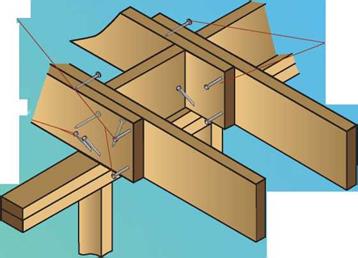
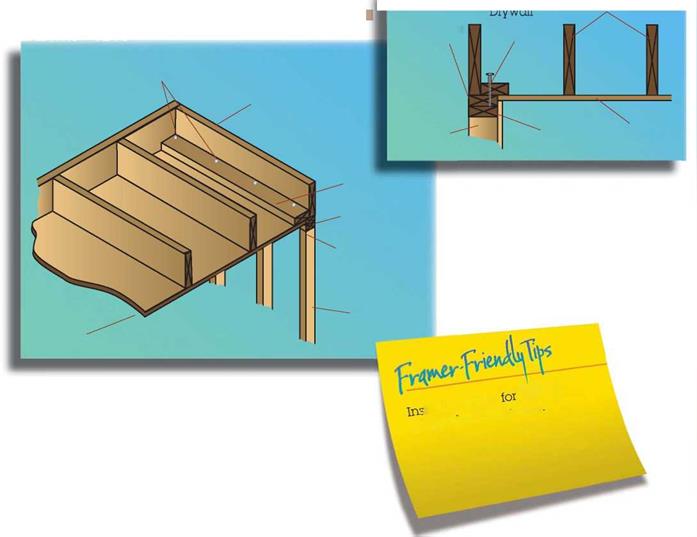 Two 16d or 3” x,131" nails on the end of each joist,
Two 16d or 3” x,131" nails on the end of each joist,
|
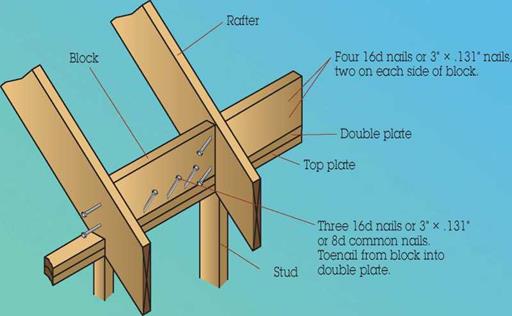


![]()
 |
|

 Two 16d or 3” x,131" nails on the end of each joist,
Two 16d or 3” x,131" nails on the end of each joist,
|

|
A |
foundation system has two functions. First, it supports the building structurally by keeping it level, minimizing settling, preventing uplift from the forces of frost or expansive soils and resisting horizontal forces such as winds and earthquakes. Second, a foundation system keeps the wooden parts of the building above the ground and away from the organisms and moisture in the soil that both eat wood and cause it to decay.
The foundation is the part of a building that is most likely to determine its longevity. If the foundation does not support the building adequately, cracks and openings will occur over time, even in the most finely crafted structure...
read more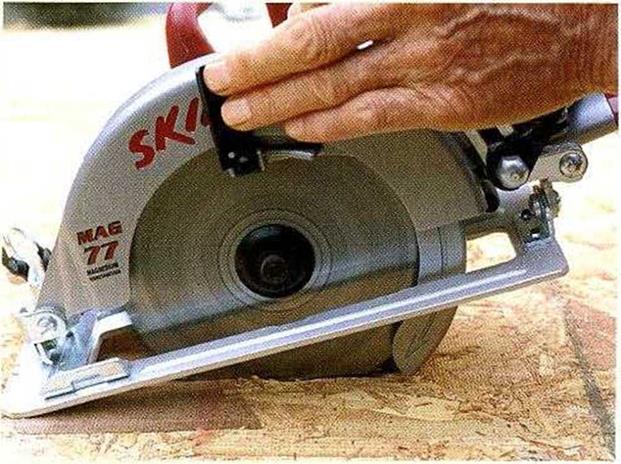
SOMETIMES IT’S NECESSARY to cut a hole in the middle of a board or a panel. You can do this with your circular saw if you know how to make a plunge cut. (Don’t attempt this unless you’re an experienced circular-saw user.) Start by leaning the saw forward over the cut line. Rest the front edge of the saw base on the wood, and hold the blade about 1 in. from the surface. Use the lever on the blade guard to lift the guard and expose the blade. Make sure that the blade is aligned over the cut line. Start the saw and use the front edge of the base as the pivot point. Lower the blade into the wood, using both hands to control the saw and complete the cut. When you are finished, turn off the saw and let the blade stop spinning before pulling it out...
read more|
л°0°аОгя^*« ) „О» "nOLr Од a іе&9’"в?0да |
![]()


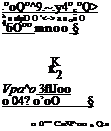 |
|
 |
|
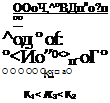 |
|
Based on their ambient material, aquifers can be classified into three types, i. e. open, A confined aquifer is bounded both above and below by relatively impermeable materials or confining beds (such as clay or unfractured rock.) The confined water is under pressure thus a tube extended from the surface down into the aquifer would allow the water to rise inside the tube to a level above the top of the aquifer.
• An open aquifer is one without a confining bed above so it can be directly recharged by rainfall.
• A semi-confined aquifer is a confined aquifer where one of the confining beds is saturated material with low permeability which, thus, impedes the movements of the water...
read moreAccording to the literature, various definitions of groundwater exist. For some authors, groundwater is defined as water only in those pores that are completely
saturated, but for others a more general definition is acceptable with the groundwater being all the water below the ground surface either in the saturated or in the unsaturated part.
A geological medium containing groundwater is defined as an aquifer. Aquifers can be described as rock or soil (sediment) of high permeability that are able to store and transmit significant quantities of groundwater. In hydrogeological terms, the limit between an aquifer and less permeable geological media is frequently defined with a coefficient of permeability, K, of 10-6 m/s.
Figure 2...
read more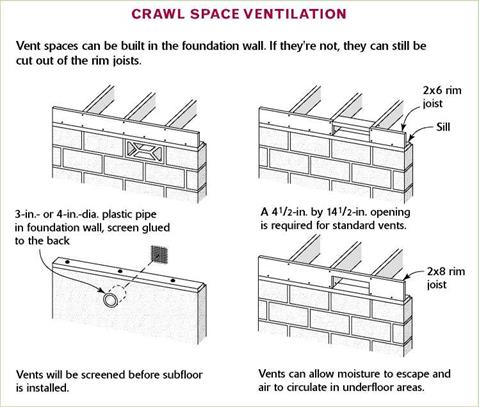
Until recently, most crawl-space foundations were built with vents to promote air circulation and help prevent damaging levels of moisture from building up beneath the house. In northern states, builders often install vents that can be closed in the winter to keep out cold air. The same is done on the Oregon coast to keep out moist air. Many local building codes require crawl-space ventilation, so be sure to check with your building department to find out which requirements are in effect.
Codes requiring vents usually stipulate that a vent be installed 2 ft. from each corner of the foundation and every 6 ft. on at least three sides of the building. For appearance’s sake, most builders try to leave vents off the front of the building.
If you need to install crawl-space vents, there are s...
read moreThe joint distribution and conditional distribution, analogous to the concepts of joint probability and conditional probability, are used for problems involving multiple random variables. For example, flood peak and flood volume often are considered simultaneously in the design and operation of a flood-control reservoir. In such cases, one would need to develop a joint PDF of flood peak and flood volume. For illustration purposes, the discussions are limited to problems involving two random variables.
The joint PMF and joint CDF of two discrete random variables X and Y are defined, respectively, as
px, y(x, y) = P(X = x, Y = y) (2.14a)
Fx, y(u, v) = P(X < u, Y < v) = px, y(x, y) (2.14b)
x<u y<v
Schematic diagrams of the joint PMF and joint CDF of two discrete random variables are shown in ...
read moreWORKING ON A CONSTRUCTION SITE is not a * Don’t drink (or do drugs) while doing construe-
sunny stroll in lhe park. There are all kinds of tion work.



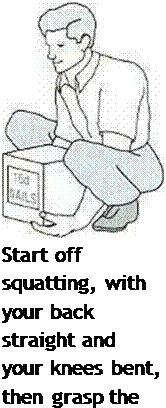

unusual, uncomfortable, and potentially hazardous conditions you may encounter—uneven ground, troublesome weather, boards with protruding nails, and sloped roof surfaces that challenge your balance. Learning how to work safely and effectively in a construction environment is just one more skill that you need to acquire, such as hammering a nail or sawing a board. Here are some basic suggestions to keep you safe and productive:
a Wear good shoes, clothes that fit well, long – sleeved shirts, long pants, a hat with a brim, and sunscreen...
read moreI use the term “traditional” timber framing to describe the system of joining timbers to each other without benefit of metal or mechanical fasteners. Typically, posts, girders, rafters, king and queen pins, etc., are connected to each other by the use of time-tested joinery such as mortise and tenon joints, scarf jointing, dovetails, rabbetting, etc. A good example of traditional timber framing is seen in Figure 2.17, in the next chapter.
In most cases, one or more people will lay out the various sides, gable ends, and “bents” (internal wall framing or other internal structural assemblies) on the ground. Time and care are taken to join the various heavy timbers by one of the many clever and intricate joints that have evolved over the centuries...
read moreTaking measurements has radically changed since I started building. My everyday measuring tool used to be a 6-ft. folding ruler. Imagine the time it took to measure and cut a board to length, especially one over 6 ft. long.
First I had to unfold the ruler, section by section, then measure out the distance on the board. Then I had to fold up the ruler and put it away. It’s no wonder that steel tape measures are now much more common on job sites everywhere.
Tape measures get used a lot and so require special care. Here are some maintenance tips to ensure that your tapes continue to work smoothly for a long time.
• Don’t leave an extended tape lying around on the floor. If someone steps on the tape, it will be creased and will never work properly again.
• Don’t let a tape reel in too f...
read more